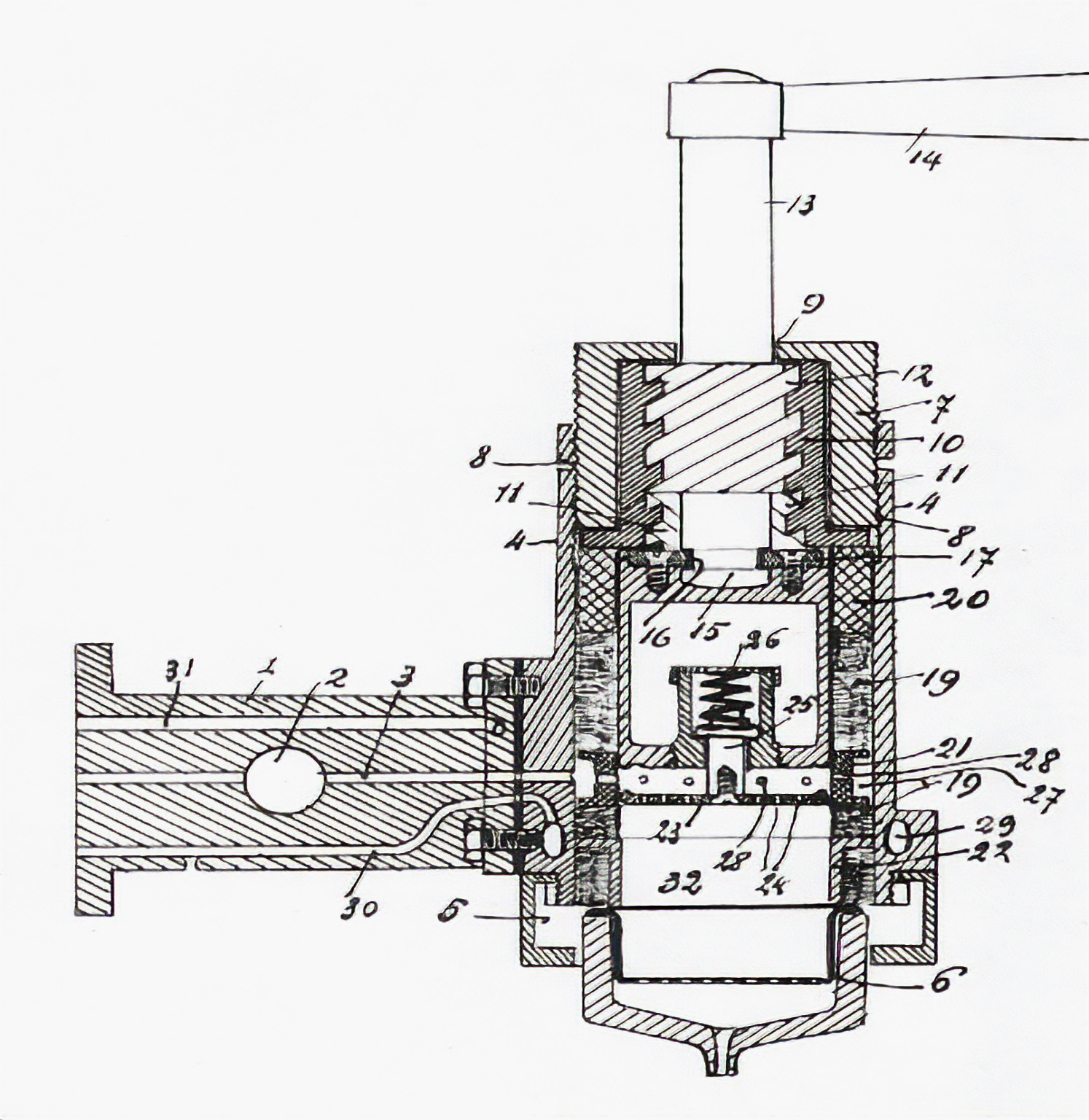A year after Giarlotto pioneered the ‘bike pump’ approach, a giant advance from using steam pressure for extraction came with the introduction of the screw piston. In his 1910 patent design, shown below, Pier Teresio Arduino added a batch-brewing group head to a large-scale upright boiler design. It had an ordinary portafilter on one side and a large screw piston group on the other. After water entered the group head, the operator of the machine could simply twist the screw to squeeze the water through the coffee. Unfortunately, this approach does not appear to have been regarded as successful; Arduino’s patents lodged after 1914 made no further mention of the screw piston.
 Depiction of a screw piston on a coffee maker, from a 1910 patent lodged by Pier Teresio Arduino
Depiction of a screw piston on a coffee maker, from a 1910 patent lodged by Pier Teresio Arduino
Antonio Cremonese and Rosetta Scorza
The screw piston concept lay dormant for three decades. It resurfaced in the mid-1930s in a patent drawn up by Antonio Cremonese. Prior to patenting his piston group, Cremonese had already made an important contribution to the coffee world: His 1929 patent introduced the conical burr grinder to Italy (Bersten 1993). Cremonese developed the first-known coffee grinder to incorporate a dosing system, pictured below (Delprat 2018).
Cremonese died at age 42. His wife, Rosetta Scorza, inherited his patents and sold the screw piston patent to Giovanni Achille Gaggia, who paid her 1,000 lira (valued at around 1,000 euros in 2021) (Delprat 2018).
Until the outbreak of World War II and for a short period after the war, Gaggia produced a screw piston group designed to be compatible with older machines. He named the group head ‘Lampo’. (Lampo means ‘lightning’ in English.) Soon after the war ended, Gaggia’s ambitions grew, and he became committed to the idea of building an entire espresso machine. He made a sizable financial investment and worked with expert fabricators.
 An illustration from Rosetta Scorza’s patent from 1936,
An illustration from Rosetta Scorza’s patent from 1936,
